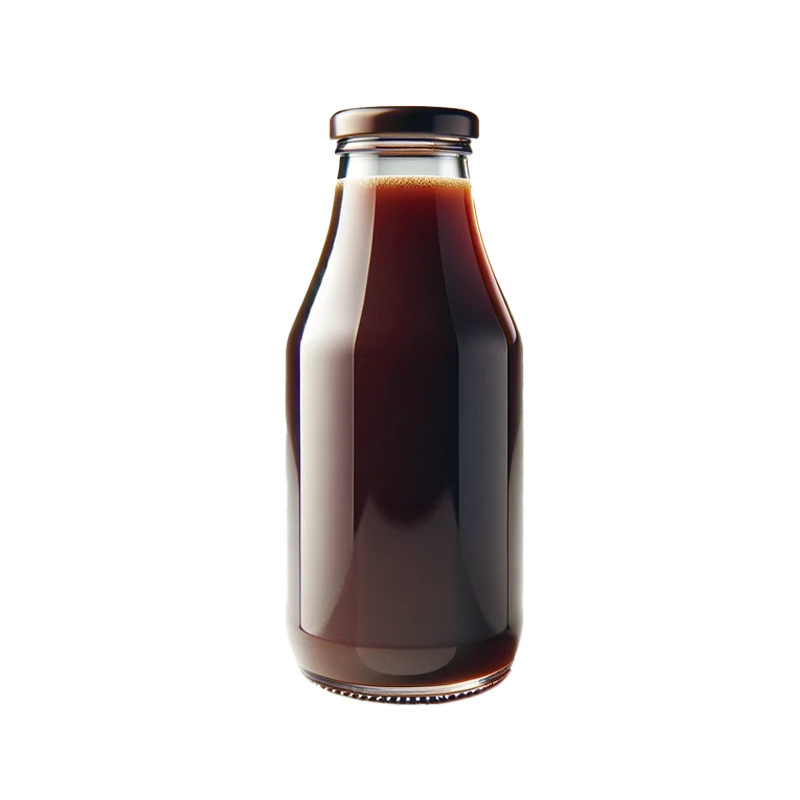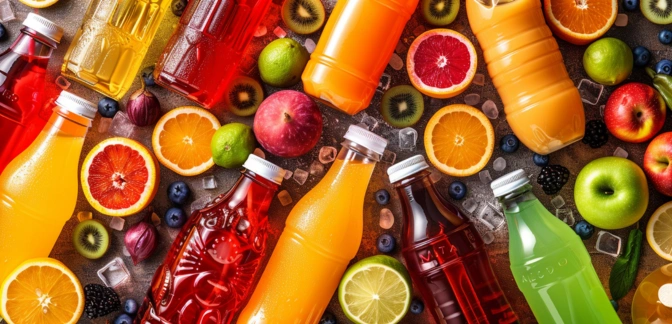Prune Juice — Nutrients, Health Benefits, And Shopping Tips

Written by Listonic Team
Last update on September 6, 2024
Prune juice nutrients
Nutrition facts
Amount per 100 g
Calories
🔥 71 kcal
| Nutrition per: 100 g | Value | % Daily Value* |
|---|---|---|
| Carbs | 18 g | 6.55% |
| Fiber | 1 g | 3.57% |
| Sugars | 17 g | 34% |
| Glycemic Index | 45 | - |
| Protein | 1 g | 2% |
| Sodium | 4 mg | 0.17% |
| Total Fat | 0 g | - |
*The % of Daily Value (DV) tells you how much a nutrient in a serving of food contributes to a daily diet. 2,000 calories a day is used for general nutrition advice.
45
🟢 Low Glycemic Index
Prune juice facts & tips
Health benefits
- Rich in fiber, promoting digestive health and regular bowel movements, and can help relieve constipation.
- High in antioxidants such as phenolic compounds, which help protect the body from free radicals and reduce inflammation.
- Contains essential vitamins and minerals such as Vitamin C, potassium, and iron, which support overall health and well-being.
- Supports bone health due to its high boron content, which helps maintain bone density.
Health risks
- High sugar content even though it is natural sugar, it can contribute to weight gain, tooth decay, and increased risk of diabetes if consumed in large quantities.
- High calorie content which can contribute to weight gain if consumed frequently or in large portions.
- Potential for digestive discomfort such as diarrhea or stomach cramps when consumed in large quantities due to its natural laxative effects.
- Risk of allergic reactions in some individuals, particularly those allergic to plums, causing symptoms like itching, swelling, or difficulty breathing.
How to choose prune juice
Prune juice should have a deep, rich color and be free from any sediment. The juice should pour smoothly, without any clumping, indicating it has been properly filtered.
Avoid prune juice that is overly thick or has crystallized sugar at the bottom of the container. Juice that smells fermented or has an off taste should also be avoided, as it is likely past its prime.

How to store prune juice
Prune juice should be stored in the refrigerator after opening, kept in its original bottle or an airtight container. Refrigeration helps maintain its freshness and flavor for up to a week. Always ensure the lid is tightly closed after each use.
Leaving prune juice at room temperature can lead to rapid spoilage. Avoid exposure to direct sunlight, which can degrade its quality. Always shake well before use and check for any off smells or flavors before consuming.
✅ Extra Tip
How long does it last?
Prune juice can last for 7-10 days in the refrigerator once opened. Unopened, it can last for 6-12 months when stored in a cool, dark place. Always check the expiration date on the packaging for the best quality.
What to do with leftovers?
Leftover prune juice can be used in a variety of sweet and savory dishes. Use it as a base for smoothies by blending it with fruits like bananas, berries, and yogurt, or mix it into a cocktail or mocktail for a sweet, rich flavor. Prune juice is also great when used as a sweetener in baking, where it can add moisture and a deep flavor to cakes, muffins, or bread.
Use prune juice in a marinade for meats like pork or chicken, where its natural sugars help to tenderize and flavor the meat. If you have a lot of prune juice, consider making a batch of prune juice syrup by reducing it with sugar, perfect for drizzling over pancakes, waffles, or desserts. Prune juice can also be mixed into a sauce or glaze for roasted vegetables or meats, or used as a base for a fruit compote. For a quick snack, mix prune juice with sparkling water for a refreshing spritzer, or use it as a base for a fruit punch with fresh fruits.
👨⚕️️ Medical disclaimer
Discover products from other categories
Listonic Team
Fact-checked
Our editorial team checked this article to make sure it was accurate at the time of publishing it.
Get the top-rated shopping list app on your phone!







